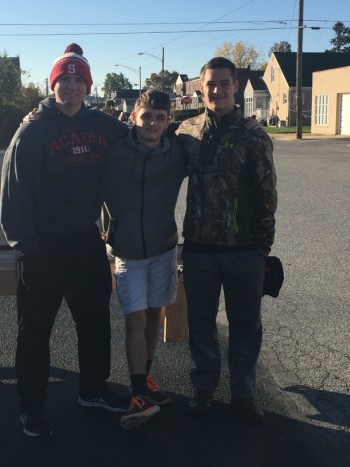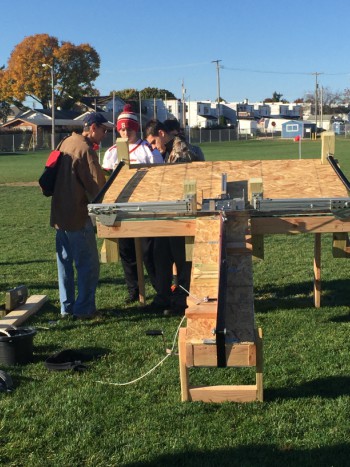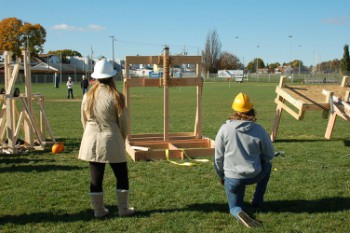Teams Compete in Punkin’ Chunkin’ Competition

December 1, 2016
Two teams competed in the Punkin’ Chunkin’ competition on November 4.
The competition is where high school students, who enjoy engineering, come together to build catapults to launch pumpkins competitively. Teams have three throws per catapult; the goal was to get closest to the pin with the average of three throws.
Senior Ethan Daviau and JoAnn Weichseldorfer were on team Onager. Juniors Andrew Foxwell, Derek Charleton, and Conor Custer were on team Ballista. Team Onager’s average distance to the pin was 28.4 meters, and they placed eighth out of fifteen teams. Team Ballista’s average distance was 38.7 meters, and they placed eleventh. Both teams spent many long nights and weekends to prepare for this competition.

Daviau said the process of building the catapult was tedious. “You come up with a design, and refine your design. And then end up making a scale version, that is small. And then you go through the usual steps that you would with testing, and evaluate what happened with that. Next, you go back and redesign from your old design to make your new one, and then you build your full one. And then that’s when you go to the competition,” said Daviau.

Team Ballista and Onager ran into many problems throughout the building process. “When we were making our model, we didn’t know how to harness enough power to launch a scale object, like a golf ball. Eventually, we had to use like door springs. But because of that, when we launched our first scale object, we ended up breaking the model. That, which of course, ended up requiring a night’s worth of work,” said Custer.

Teams ran into many problems which affected how much time they had. “We ran into some problems the night before the competition, like the winch we used to crank the arms back. We ended up stripping the rod, so the winch basically busted. We hadn’t tested at all, it was the night before the competition, and we had no clue what this thing was going to do, so we had to fix it and hope it was going to fire,” said Foxwell.
James Rayburn helped advise the teams throughout this process. “I am proud of both teams and their approach to solving the many engineering problems they faced,” said Rayburn.
Both teams praised the competition as a whole. “It was fun, teams were great. One of the major pluses of going to the competition was just how friendly the people were there,” said Charleton.
In order to eventually compete in a Punkin’ Chunkin’ competition, electives like Basic Design and Engineering I allow students to eventually take Engineering II and III, the competition levels.




